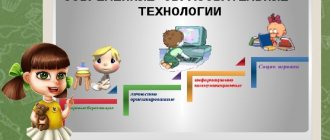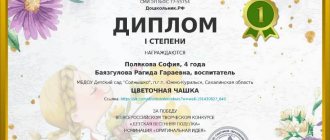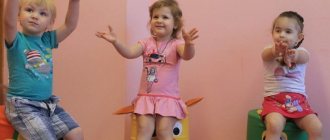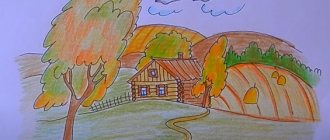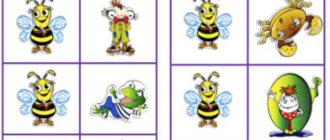A job description for a kindergarten teacher is needed as an addition to the employment contract, which explains its points. Although it is not mentioned in modern legislation, business practice and recommendations of regulatory authorities lead to the fact that most employers include it in standard labor documentation packages. As a legally binding document, this instruction must be correctly written and formatted.
- Form and sample
- Free download
- Online viewing
- Expert tested
FILES
Is a job description necessary?
A job description is not a mandatory act. Theoretically, a teacher can work quite successfully without this document. However, in practice, most employers still prefer not to abandon job descriptions. And this is a completely understandable trend, because it is easier for any employee to work when he clearly knows:
- what are the requirements for his position;
- what specific job responsibilities are assigned to him;
- what professional rights he is entitled to enjoy.
It is also beneficial for the employer that a job description be developed and approved for each subordinate specialist. With the help of the latter, the employer will be able to prove the legitimacy of:
- refusal to hire (the applicant does not meet the requirements listed in the instructions);
- application of disciplinary sanctions for failure to fulfill job duties (the employee does not perform or performs his duties improperly, although he knew about the need to perform them, which is confirmed by the employee’s signature confirming familiarization with the contents of the job description).
Profession "kindergarten teacher"
A kindergarten teacher is a teacher who teaches and educates preschool children (up to 7 years old). The main field of activity of representatives of this profession is related to organizing the stay of children in a preschool educational institution, conducting games and activities with children, monitoring their safety and health.
Teachers are in demand in state, municipal, private and departmental kindergartens, child development centers, as well as at home.
Teachers can work either independently, for example, in a small private kindergarten, or in a team.
The areas of professional activity of a teacher are education and service.
Main responsibilities
Let us list the responsibilities of a kindergarten teacher in the junior group and any other open in a preschool institution:
- exercise control over the life and health of children during their entire stay in the kindergarten;
- conducting various types of activities, developmental, sports, preparation for holidays, etc.;
- create a favorable atmosphere that promotes conflict-free communication between children;
- instill self-service skills in students;
- resolve conflicts, show restraint and tact with children and their parents;
- monitor the health status of pupils;
- immediate notification of danger and force majeure situations to immediate superiors or the appropriate service;
- undergo a medical examination according to the schedule.
IMPORTANT!
Some responsibilities in the nursery group of a kindergarten are different from what you have to do in junior or senior children. Children come to the nursery very young, often not even able to speak, they are not yet able to fully take care of themselves, and often cry. And in the younger group, the pupils are older, more responsible, and the majority have already undergone initial adaptation to new conditions. And if we talk about older people and “graduates,” then they need full-fledged training and development, and not training in self-service skills, like kids.
How to write a job description for a teacher?
The job description of a teacher is usually drawn up by an authorized person, for example, a lawyer or an employee of the personnel service of the department or department, the structure of which includes the preschool educational institution. Sometimes the manager of the garden himself is involved in the development of this document.
When drawing up a job description, it is necessary to take into account the current labor legislation, in particular the Labor Code of the Russian Federation, as well as:
- Professional standard “Teacher”, approved by order of the Ministry of Labor of Russia No. 544n dated October 18, 2013;
- Federal State Educational Standard for Preschool Education, approved by order of the Ministry of Education and Science No. 1155 of October 17, 2013;
- Sanitary and epidemiological requirements for organizations of education and training, recreation and health improvement of children and youth SP 2.4.3648-20.
If we are talking about a specialist in a state, municipal or departmental institution, then the job description must be developed in accordance with the professional standard. For private organizations, the requirements of the professional standard are advisory in nature. But you need to take into account that in any case, the work of a teacher involves contact with children, therefore specialized education and compliance with other legally established requirements (availability of specialized education, absence of medical contraindications, absence of a criminal record) is mandatory.
Job description structure
Since a job description is not a mandatory document, the law does not provide for any universal template. In fact, each employer has the right to independently develop a suitable form of instruction for him.
Very often, the structure of a job description is formed by the following 4 main blocks:
- general provisions;
- job responsibilities;
- rights;
- responsibility.
If desired or necessary, the contents of the document can be supplemented with other sections, for example, “Qualification requirements”, “Working conditions in the workplace”, “Procedure for making changes to the job description”, “Final provisions”.
Hygiene and medicine
The job responsibilities of the teacher also imply compliance by the employee himself with sanitary standards and hygiene rules. This also applies to children. That is, the teacher is obliged to monitor sanitary standards in the group, as well as the children’s compliance with hygiene rules.
You will have to worry about your health, both your own and your children’s. In other words, the employee is obliged to undergo a medical examination in a timely manner. And, in addition, take children for routine examinations. Usually there is a nurse or pediatrician right in the kindergarten building.
In addition, it is the teacher who is obliged to report suspicions of any disease, and also to show the child to the doctor if the baby is already exhibiting certain symptoms of the disease. When a child becomes ill, the teacher must also show him to the nurse in the kindergarten. If necessary, as already mentioned, you will have to call the parents, tell them about what happened, and also ask them to pick up the baby and show him to the doctor.
Contents of the job description
Next, we’ll look at what specifically to indicate in each section of the job description for a kindergarten teacher.
General provisions
In the first paragraph, indicate that this document was developed in accordance with current labor legislation, professional standards, Federal State Educational Standards and sanitary and epidemiological requirements.
Please note that this instruction is approved for the purpose of regulating the main job functions, job responsibilities, rights and responsibilities of the teacher, as well as his relationships and connections in his position.
Write down the mechanism according to which a kindergarten teacher is hired and dismissed.
In the next paragraph, list the requirements for a candidate for the position of teacher. Requirements can be taken from the professional standard. In particular, a preschool teacher must meet the following parameters:
- higher or secondary vocational education in the direction of “Education and Pedagogical Sciences” or higher or secondary vocational education and additional vocational education in the field of activity;
- undergoing preliminary and periodic medical examinations, extraordinary medical examinations, mandatory psychiatric examination (once every 5 years), professional hygienic training and certification (when applying for a job and every 2 years), vaccinations, having a personal medical record with the results of medical examinations, data on vaccinations and results of professional hygienic training and certification.
- no restrictions on engaging in teaching activities, as specified in Art. 331 Labor Code of the Russian Federation.
Next, you need to record who the teacher will report to during his work activity. This can be a senior teacher or the head directly.
Indicate that the teacher carries out his work activities in the kindergarten in accordance with this job description.
In the next paragraph, list the laws, regulations, as well as local regulations that guide the teacher in the process of work.
The next two blocks can be devoted to what a teacher should know and be able to do. It is better to write out the lists of necessary knowledge and skills in as much detail as possible. For example, a teacher needs to be well versed in the basic patterns of age-related development, the basics of preschool pedagogy, the theory and methodology of educational work. A preschool teacher in the senior, middle or junior group must also be able to communicate with children, master teaching methods and forms, establish partnerships with parents, and much more.
What complaints do parents often make to teachers?
I decided to write this article based on my own experience, as well as recalling cases from the practice of my employees, and having studied thematic blogs of parents. According to my observations, there are several types of parents: active but harmless, aggressive, adequate, indifferent or too tactful.
The first ones are interested in everything, constantly call and ask about their child, try to do something for the group, and often establish fairly close relationships with the teachers and kindergarten administration. They can be too annoying, but such parents help us a lot, take care of various organizational issues, etc. They usually do not find fault with teachers, do not conflict, but try in every possible way to appease them.
Aggressive ones are a headache for the entire kindergarten. Everyone knows these parents by sight; they constantly write complaints and conflict with teachers and other parents. Of course, everyone suffers from this, including their children, because they feel rejected by the team. A professional teacher does not transfer his attitude towards conflicting parents to their children, but all the same, people are people... This type is always dissatisfied: they didn’t feed them, they didn’t dress them or comb their hair properly, they offended them, they caught a cold, they didn’t wipe their nose...
Adequate parents will not conflict over trifles. But they will not remain silent if they don’t like something. Such parents kindly but firmly explain to the teacher their position and their request. What can I say - this type of parent is the most pleasant for any educator. They know their rights and do not demand the impossible.
Those who are indifferent may truly not care, or they may simply be too intelligent to express their dissatisfaction. They are unable to bring themselves to voice complaints, even if something really ugly happens: the teacher did not take care of the child, and he broke his nose, constantly wears wet pants, is dressed carelessly when going out, etc.

In general, all complaints can be reduced to one thing: poor care and supervision of children. I think any of you, friends, who have children, have many “scary” stories about clueless teachers.
Final provisions
In the last section, note that the employee must be familiar with the instructions upon hiring.
Indicate the number of copies of the document drawn up, and also establish who is responsible for monitoring the execution of the instructions.
The job description is approved by the head of the preschool educational institution. The fact that the employee has familiarized himself with the document is confirmed by the signature of the person being familiarized, which is affixed both on one of the copies of the instructions and in a special familiarization journal.
